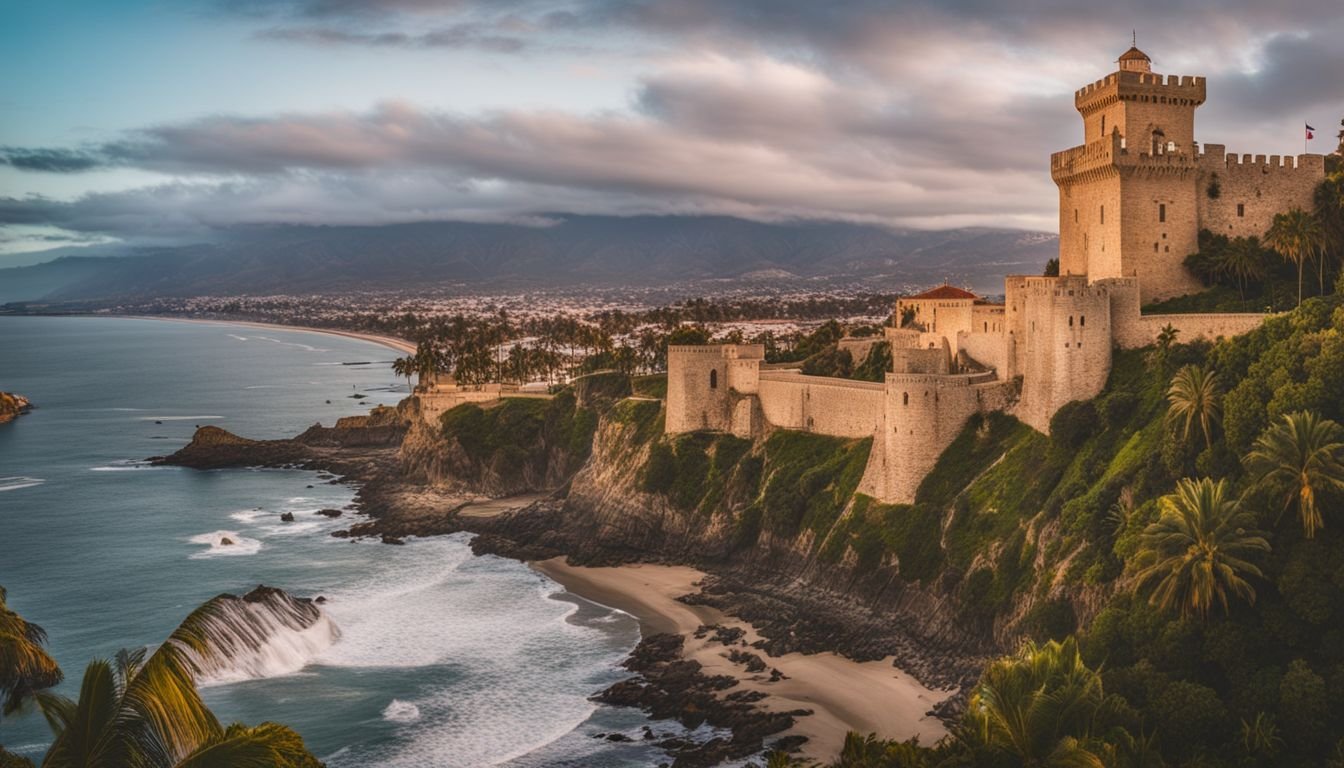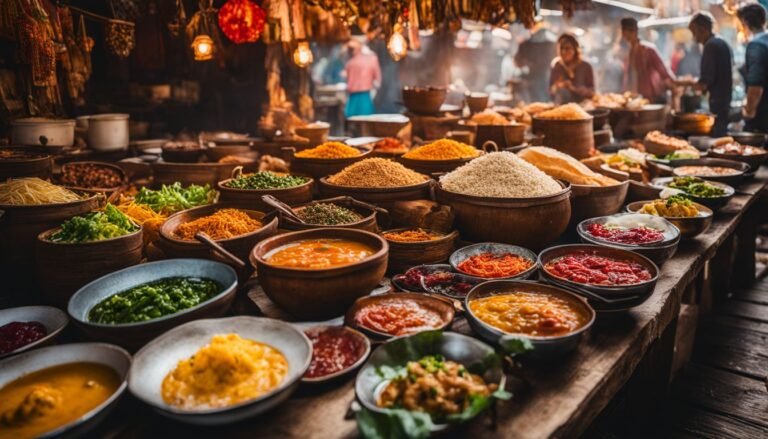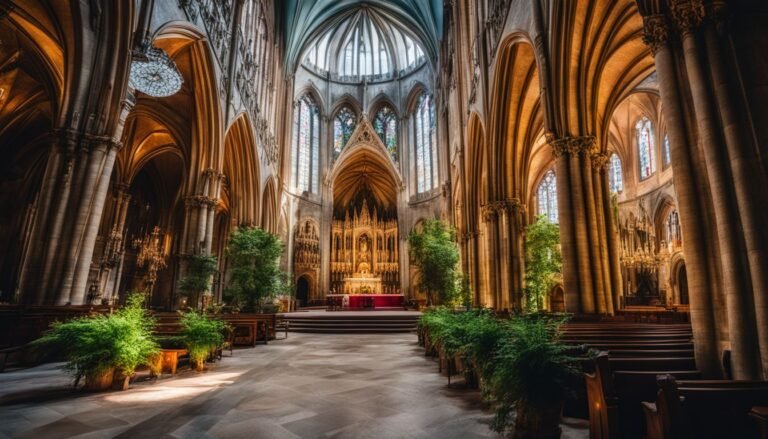Cultural Landmarks of Costa Blanca
Finding cultural landmarks in Costa Blanca can sometimes be challenging for travelers. This Spanish coastline is famous for its beautiful beaches and sunny weather. Our blog will guide you through discovering the rich cultural spots of this region, including hidden gems and well-known monuments.
Get ready to explore!
The Rich Heritage of Costa Blanca

Costa Blanca’s rich heritage unfolds through its vibrant cultural landmarks, offering an immersive journey into the past. Art galleries and museums dot the region, telling tales of history and creativity that capture the spirit of both ancient and modern civilizations.
Visitors delve into this legacy by exploring wineries that have produced exquisite wines for generations. These experiences not only enrich knowledge but also link visitors directly to the traditions and lifestyles of local communities.
From cooking classes celebrating the intangible cultural heritage of Mediterranean cuisine to art workshops that foster a deep connection with local culture, Costa Blanca serves as a canvas for learning and discovery.
Historical sites stand as silent witnesses to the area’s evolution, inviting exploration and reflection on the human stories they harbor. Moving forward, famous landmarks further encapsulate Costa Blanca’s unique blend of natural beauty and architectural marvels.
Famous Landmarks of Costa Blanca

Discover the stunning Castillo de Santa Barbara, which offers breathtaking panoramic views of Costa Blanca. Explore El Casco Antiguo de Benidorm, a historic old town with charming streets and traditional Spanish architecture.
Castillo de Santa Barbara
Perched atop Mount Benacantil, the Castillo de Santa Barbara towers over the city of Alicante, symbolizing its enduring heritage and resilience since the 9th century. This majestic castle has seen various civilizations leave their mark, contributing to a rich tapestry of architectural and cultural significance.
Its strategic location not only served as a fortress but also offers breathtaking views of Costa Blanca, solidifying its status as a symbol of the community’s identity.
Inside the castle walls, visitors find themselves immersed in history through exhibitions, audiovisual presentations, and guided tours that bring to life its historical importance.
The grounds feature beautifully maintained gardens and outdoor spaces perfect for leisure activities. These elements combine to make Castillo de Santa Barbara a compelling destination for those keen on exploring Costa Blanca’s rich heritage.
Now let us move toward El Casco Antiguo de Benidorm to uncover more about Costa Blanca’s enchanting landmarks.
El Casco Antiguo de Benidorm
El Casco Antiguo de Benidorm stands as a testament to the cultural richness of Costa Blanca. Located on a promontory that divides the town’s two main beaches, this area is a maze of narrow lanes and alleys culminating at the Balcón del Mediterráneo belvedere.
It offers breathtaking views that connect visitors directly with the vastness of the Mediterranean Sea. The charm of El Casco Antiguo extends beyond its scenic vistas; it hosts San Jaime Church, an 18th-century parish church dedicated to Benidorm’s patron saint.
Within these historic streets, one also finds the Maritime Cultural Center, where model ships and nautical exhibits tell tales of Benidorm’s maritime history. This center plays a crucial role in preserving and sharing the community’s rich seafaring traditions with both locals and tourists alike.
Visitors meandering through El Casco Antiguo experience not only architectural beauty but also plunge into historical narratives that have shaped this vibrant region over centuries.
Guadalest Valley
The Guadalest Valley, part of the famous landmarks of Costa Blanca, offers a rich cultural experience for visitors. This scenic valley is home to historic buildings perched on rocky cliffs and surrounded by stunning natural beauty.
Visitors can explore the picturesque streets lined with traditional whitewashed houses, visit the 11th-century castle, and immerse themselves in the local culture at the museums showcasing historical artifacts.
The reviews and opinions of tourists highlight the unique charm and captivating history that make Guadalest Valley a must-visit destination for those seeking an authentic cultural experience in Costa Blanca.
Passeig Esplanada d’Espanya
Passeig Esplanada d’Espanya stands as a popular and culturally significant promenade in Alicante, Spain. Lined with palm trees, it captivates visitors with its mosaic tiles and marble benches, creating an inviting atmosphere for strolling and relaxing amidst the architectural beauty.
The area surrounding the promenade offers access to various historic buildings like Casa Carbonell, Casa del Mar, and Casa Lamadrid, adding to its cultural allure. Additionally, Passeig Esplanada d’Espanya serves as a hub for dining, shopping, and entertainment with numerous cafes, restaurants, and shops along the way.
The picturesque Passeig Esplanada d’Espanya certainly entices those seeking to immerse themselves in Costa Blanca’s rich heritage while offering convenient access to other nearby attractions such as the historic Old Town of Alicante and Santa Barbara Castle.
Benidorm Old Town
Benidorm Old Town, rich in cultural landmarks and historical charm, offers visitors a captivating glimpse into the area’s heritage. From ancient ruins to religious sites, the town boasts an array of attractions that showcase its fascinating history.
Furthermore, Benidorm Old Town features scenic walking areas where visitors can leisurely explore its iconic landmarks such as the picturesque ancient ruins and traditional Spanish architecture.
The area exudes an enchanting atmosphere with its well-preserved structures and cobbled streets, allowing tourists to immerse themselves in the captivating culture of Costa Blanca.
Significant Monuments & Statues in Costa Blanca
Discover the fascinating array of significant monuments and statues that grace Costa Blanca, offering a glimpse into its rich cultural history. These iconic landmarks symbolize the region’s heritage and hold captivating stories waiting to be unraveled.
Estatua de la Bella Lola
Estatua de la Bella Lola, situated in Costa Blanca, Spain, stands as a significant cultural landmark. This statue holds historical and artistic significance and is nestled within a specific neighborhood, adding to the region’s diverse attractions.
With its well-maintained state, it continues to captivate tourists from around the world, contributing substantially to the rich tapestry of heritage tourism in Costa Blanca.
Estatua de la Bella Lola is an integral part of the area’s appeal for heritage seekers due to its historical context and accessibility for visitors. Its presence adds depth to the cultural landscape of Costa Blanca while offering an intriguing insight into the region’s history and artistry.
Monumento Homenaje a los Musicos Torrevejenses
Transitioning from the artistic tribute to – Estatua de la Bella Lola, we move on to another significant cultural landmark in Costa Blanca, the Monumento Homenaje a los Musicos Torrevejenses.
This monument holds great significance as it honors the local musicians of Torrevieja, symbolizing the town’s deep appreciation for their invaluable contributions to the vibrant music scene.
It stands as a testament to the rich musical tradition and the pivotal role that music plays in shaping the cultural identity of Torrevieja.
Monumento a Canalejas
Monumento a Canalejas stands as one of the significant cultural landmarks in Costa Blanca. Located centrally amidst charming parks, this imposing monument offers visitors easy accessibility to immerse themselves in the rich historical and cultural heritage of the region.
Positioned as a popular attraction for both tourists and locals, it provides an opportunity to explore and appreciate the captivating story of Costa Blanca. Intricately designed and meticulously maintained, Monumento a Canalejas captivates with its beauty while serving as a testament to the vibrant cultural tapestry of this enchanting destination.
With its central location surrounded by picturesque parks, Monumento a Canalejas not only draws visitors seeking more than just sightseeing but also serves as an emblematic symbol that underpins the ever-evolving realm of cultural richness within Costa Blanca.
Iconic Cultural Attractions in Costa Blanca
Experience the mystery of Elche, explore cave art, and savor the unique flavors of the Mediterranean diet. Discover the extraordinary cultural attractions waiting for you in Costa Blanca.
The Mediterranean diet
The Mediterranean diet, renowned for its health benefits, emphasizes fresh fruits and vegetables, whole grains, lean proteins, and healthy fats like olive oil. It also includes moderate consumption of red wine and a focus on sharing meals with family and friends.
This diet has been associated with reduced risk of heart disease, certain cancers, diabetes, and other chronic illnesses according to research studies.
In addition to promoting physical well-being, the Mediterranean diet is deeply rooted in cultural traditions that celebrate food as a means of connection and conviviality. Its emphasis on simple but flavorful ingredients reflects the region’s commitment to sustainable farming practices and culinary heritage.
Cave art
The region of Costa Blanca boasts a rich prehistoric cultural heritage, exemplified by its ancient cave art. These remarkable artworks provide valuable insights into the lives and beliefs of early inhabitants, offering a window into the distant past.
The cave art in Costa Blanca serves as a testament to the enduring creativity and expression of human civilization throughout history.
Moving on to the next section, let’s explore “The mystery of Elche” – an intriguing piece of Costa Blanca’s cultural tapestry that continues to captivate visitors from around the globe.
The mystery of Elche
The mystery of Elche encompasses the UNESCO World Heritage site, El Palmeral. This unique palm grove is a testament to the skills and knowledge of ancient cultures in managing irrigation and cultivating an oasis in arid lands.
The Mystery Play of Elche, known as Misteri d’Elx, is also a significant cultural event featuring medieval music and ritual drama that has been performed for over 500 years. Visitors can discover this historical performance held in August at the Basilica de Santa Maria, immersing themselves in the rich traditions and religious significance preserved through time.
Moreover, a visit to the Archaeological Museum of Alcoy offers insights into another aspect of Elche’s mystery – its fascinating archaeological heritage. The museum houses artifacts from various periods including Iberian, Roman, Medieval, and Modern times, shedding light on the region’s enduring history.
Museums and Art Galleries in Costa Blanca
Costa Blanca is home to a diverse array of museums and art galleries, providing visitors with opportunities to explore the region’s rich cultural heritage. The area offers an immersive experience through its museums, showcasing historical artifacts, local traditions, and contemporary art.
These cultural institutions are essential for understanding the vibrant history and artistic expression of Costa Blanca. Visitors can delve into the region’s past and present through meticulously curated exhibits that highlight the unique identity of this captivating destination.
Moreover, these museums and art galleries serve as valuable resources for both locals and tourists, offering insights into Costa Blanca’s heritage while fostering appreciation for its artistic contributions.
From traditional folk arts to modern masterpieces, these cultural hubs showcase a wide range of creative expressions that reflect the region’s distinct character. Whether it be Altea’s Museo de Arte Contemporáneo or Orihuela’s Museum Diocesano de Arte Sacro, each institution contributes to preserving and celebrating Costa Blanca’s cultural legacy.
Costa Blanca’s Impact on World Heritage
Costa Blanca’s Impact on World Heritage includes the revered El Palmeral in Elche, a UNESCO World Heritage site known for its vast palm grove. It showcases the area’s historical and cultural significance, attracting visitors seeking to explore its rich heritage.
El palmeral (Elche)
El palmeral in Elche boasts the distinction of being Europe’s largest palm grove, flaunting over 200,000 picturesque palm trees. The ancient irrigation system utilized here reflects the historical influence of Moorish and Arab agricultural practices, mirroring centuries-old traditions and ingenuity.
Symbolizing Elche’s rich heritage and tradition, this UNESCO World Heritage site captivates tourists and cultural enthusiasts worldwide. Its transcendent significance as a cultural and environmental treasure underscores its global importance.
The breathtaking expanse of El palmeral serves as a testament to the region’s enduring history, welcoming visitors from around the globe to marvel at its natural splendor and immerse themselves in its timeless allure.
Conclusion
Costa Blanca showcases a rich tapestry of cultural landmarks, inviting visitors to explore its diverse heritage. From the imposing Castillo de Santa Barbara to the vibrant Passeig Esplanada d’Espanya, each site tells a unique story.
The region’s historical monuments and statues, such as the Estatua de la Bella Lola and Monumento Homenaje a los Musicos Torrevejenses, provide insight into its artistic legacy. Costa Blanca’s iconic attractions, including cave art and the Mediterranean diet, offer a deeper understanding of its cultural significance.
Its impact on world heritage is exemplified by El palmeral in Elche – an emblematic symbol of this captivating destination’s historical allure.
FAQs
1. What are cultural landmarks in Costa Blanca?
Cultural landmarks in Costa Blanca include historic sites, museums, and art galleries that reflect the rich history and artistic heritage of the region.
2. How do I find information on visiting these landmarks?
To find up-to-date information on visiting cultural landmarks in Costa Blanca, check community guidelines or use an automated tracking system online for the latest details.
3. Can content specialists help me learn more about these landmarks?
Yes, content specialists can provide detailed guides and articles that explore the significance of each landmark, offering insights you might not discover on your own.
4. Are there any rules I should follow when visiting cultural landmarks in Costa Blanca?
When visiting cultural landmarks, always respect community guidelines to ensure these places remain preserved for future generations to enjoy.







